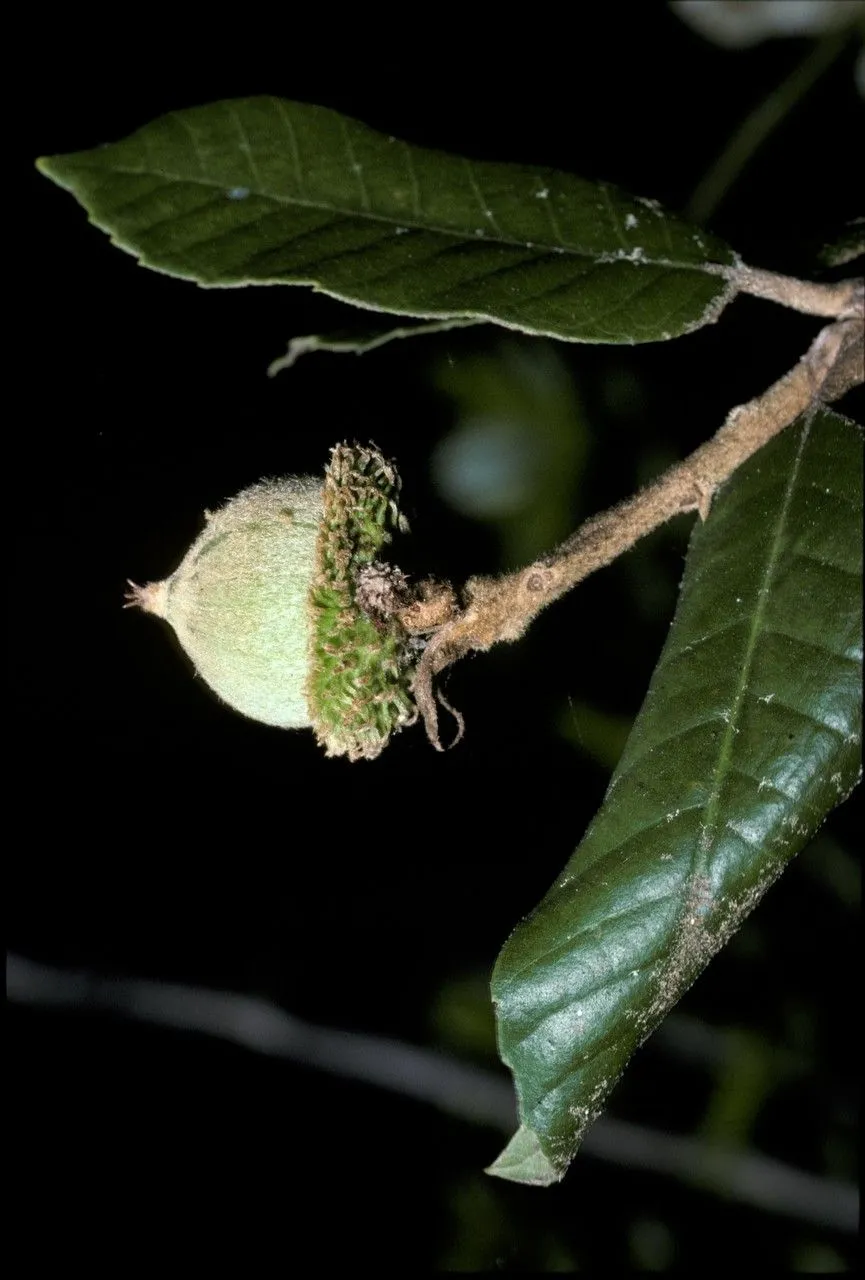
Author: (Hook. & Arn.) Manos, Cannon & S.H.Oh
Bibliography: Madroño 55: 188 (2008)
Year: 2008
Status: accepted
Rank: species
Genus: Notholithocarpus
Vegetable: False
Observations: S. Oregon to California
Tanoak, scientifically known as Notholithocarpus densiflorus, is a remarkable and distinct species within the Fagaceae family. This resilient and adaptable tree is found primarily in the regions spanning from Southern Oregon to California, where it thrives in the diverse climatic and geographical conditions of the western United States.
The robust structure of the Tanoak makes it a significant component of its native forest ecosystems. It exhibits dense, leathery leaves that have a unique lanceolate shape, aligning them closely to other members of the oak family while showcasing its distinct characteristics. These leaves have a deep green upper surface, while the underside reveals a lighter, somewhat fuzzy texture. The Tanoak’s ability to maintain such foliage year-round contributes to the evergreen nature of the regions it inhabits.
One of the most fascinating aspects of Notholithocarpus densiflorus is its flowering and fruiting behavior. The Tanoak produces small, inconspicuous flowers that cluster densely together, hence the species name “densiflorus.” These flowers eventually give way to acorn-like fruits that serve as a crucial food source for a variety of wildlife, including birds and small mammals.
Ecologically, the Tanoak plays an essential role in its habitat. It serves not only as a prolific provider of nourishment through its fruits but also offers shelter and nesting sites to numerous animal species. Furthermore, the tree’s extensive root systems help stabilize soil and prevent erosion, maintaining the integrity of hillside and forest floor ecosystems.
First documented in “Madroño” in 2008, the nomenclature and classification of Tanoak were refined by the collaborative efforts of scientists (Hook. & Arn.) Manos, Cannon & S.H.Oh. Their comprehensive research underscored the significance of this species within the Fagaceae family and illuminated its unique characteristics that distinguish it from other oak relatives.
In summary, the Tanoak is an indispensable part of the regions from Southern Oregon to California. Its persistence and intricate biological features underscore its importance in both ecological balance and biodiversity. This species continues to intrigue botanists and ecologists, contributing vast knowledge to the study of plant science and forest ecology.
Eng: tan-oak, tanbark-oak, tanoak, tan bark oak
En: Tanoak, Tanbark-oak, Tan-oak, Tan Bark Oak
Taken Jul 1, 1995 by Daniel Barthelemy (cc-by-nc)
Taken Mar 3, 2022 by Ivanot Estenoz Mendoza (cc-by-sa)
Taken Mar 3, 2022 by Ivanot Estenoz Mendoza (cc-by-sa)
© copyright of the Board of Trustees of the Royal Botanic Gardens, Kew.
© copyright of the Board of Trustees of the Royal Botanic Gardens, Kew.
Growth habit>: Tree, Shrub
Family: Myrtaceae Author: (F.Muell.) K.D.Hill & L.A.S.Johnson Bibliography: Telopea 6: 402 (1995) Year: 1995 Status:…
Family: Rubiaceae Author: Pierre ex A.Froehner Bibliography: Notizbl. Bot. Gart. Berlin-Dahlem 1: 237 (1897) Year:…
Family: Sapindaceae Author: Koidz. Bibliography: J. Coll. Sci. Imp. Univ. Tokyo 32(1): 38 (1911) Year:…
Family: Asteraceae Author: A.Gray Bibliography: Pacif. Railr. Rep.: 107 (1857) Year: 1857 Status: accepted Rank:…
Family: Fabaceae Author: Medik. Bibliography: Vorles. Churpfälz. Phys.-Ökon. Ges. 2: 398 (1787) Year: 1787 Status:…
Family: Aspleniaceae Author: (Cav.) Alston Bibliography: Bull. Misc. Inform. Kew 1932: 309 (1932) Year: 1932…